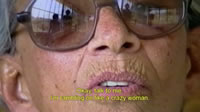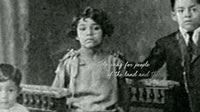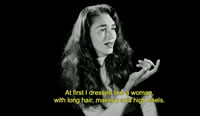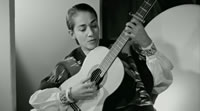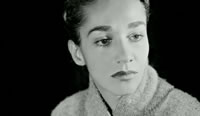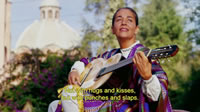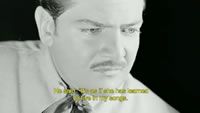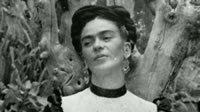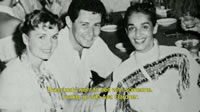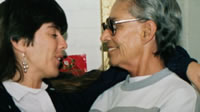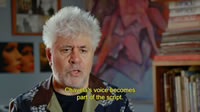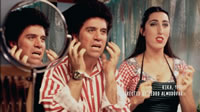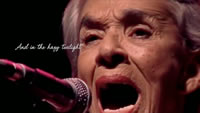Chavela (2017)
Cast includes: Isabel Vargas Lizano, Chavela Vargas, Pedro Almodóvar, Miguel Bosé, Elena Benarroch
Directors: Catherine Gund (Born to Fly), Dareska Kyi (La Voz Kids)
Genre: Documentary | Biography (93 minutes) Spanish with subtitles
“Ask me anything you want,” says Chavela Vargas in a 1991 interview. Fans want to know where she’s been for the past 15 years… most thought she had died. Even before she disappeared, Chavela was mysterious, despite her considerable fame. Most knew her as “the lady with the long braid, singing like a man.” “At first, I dressed like a woman with long hair, make-up and high heels,” says Vargas, who was a tall woman. “It didn’t work. I looked like a transvestite.” So Chavela began dressing the way she felt comfortable… pants and no make-up. That’s when her career took off. In Mexico City in the 1930s and 40s, female singers wore cute dresses, flirted and sang charming songs. Not Chavela Vargas… she was a ranchera singer, singing of tragedy and pain… music of desperation… no embellishments… only the wounded soul.
“I was born singing,” says Chavela. “I never played with dolls. I was a sad, lonely little girl.” Her parents saw her as strange and tried to hide her. Obsessed with leaving, she got to Mexico City in the 1930s, as a teenager. She discovered and embraced José Alfredo’s rancheras … “the lowest form of pain. She sang as if she personally knew the story behind every song.” Everyone knew Chavela was a lesbian, but she could never acknowledge it in public. She sang only in cabarets and clubs, but she developed a loyal following including many famous Hollywood actors and actresses… all the beautiful people. Chavela herself was considered beautiful, and many famous women woke up in her bed. But like her friend José Alfredo, Chavela was also seduced by tequila… eventually the bookings stopped. Even though people continued to buy her records, she had a worthless contract and got nothing from them. She faded away, and most people thought she had died.
When Nina, a young lawyer, volunteered to help her with her contract, Chavela began a long road back to sobriety and a singing career. Eventually, she was invited to perform in Madrid… not in clubs and cabarets but in concert halls. She even became a muse for Pedro Almodóvar and others. Although in 1991, Chavela was a less glamorous woman at age 71, her return to performing was the beginning of an even stronger career. No longer needing to hide her homosexuality, Chavela says she’s a “proud lesbian… willing to put all her cards on the table.” She says her work honors all women… wives, mothers, daughters, etc. For American audiences, Chavela’s style of singing may seem alien. American country music, which often embraces tragedy, cannot compare to the depths of despair we hear in a Chavela performance. As we watch this movie, we gradually become accustomed to ranchara and come to appreciate why Chavela was awarded a Lifetime Achievement Grammy. As a cultural icon, again we Americans may find it difficult to put ourselves in the time and place where such a visible, obviously homosexual artist, could not be honest about her sexuality. Chavela brought her personal hardships into every performance. “She would pour her heart out. You thought she might die.” In fact, “she lived in a constant state of farewell.”

3 popped kernels
The early career, the disappearance and the reemergence of ranchara singer Chavela Vargas
Popcorn Profile
Audience: Grown-ups
Gender Style: Sensitive
Distribution: Art House
Mood: Sober
Tempo: In No Hurry
Visual Style: Unvarnished Realism
Nutshell: Ranchara singer Chavela Vargas
Language: True to life

